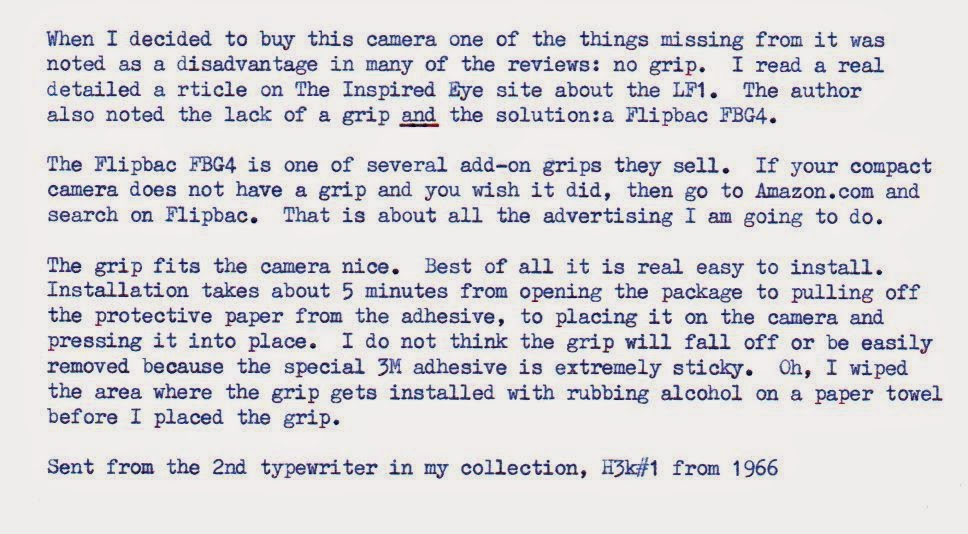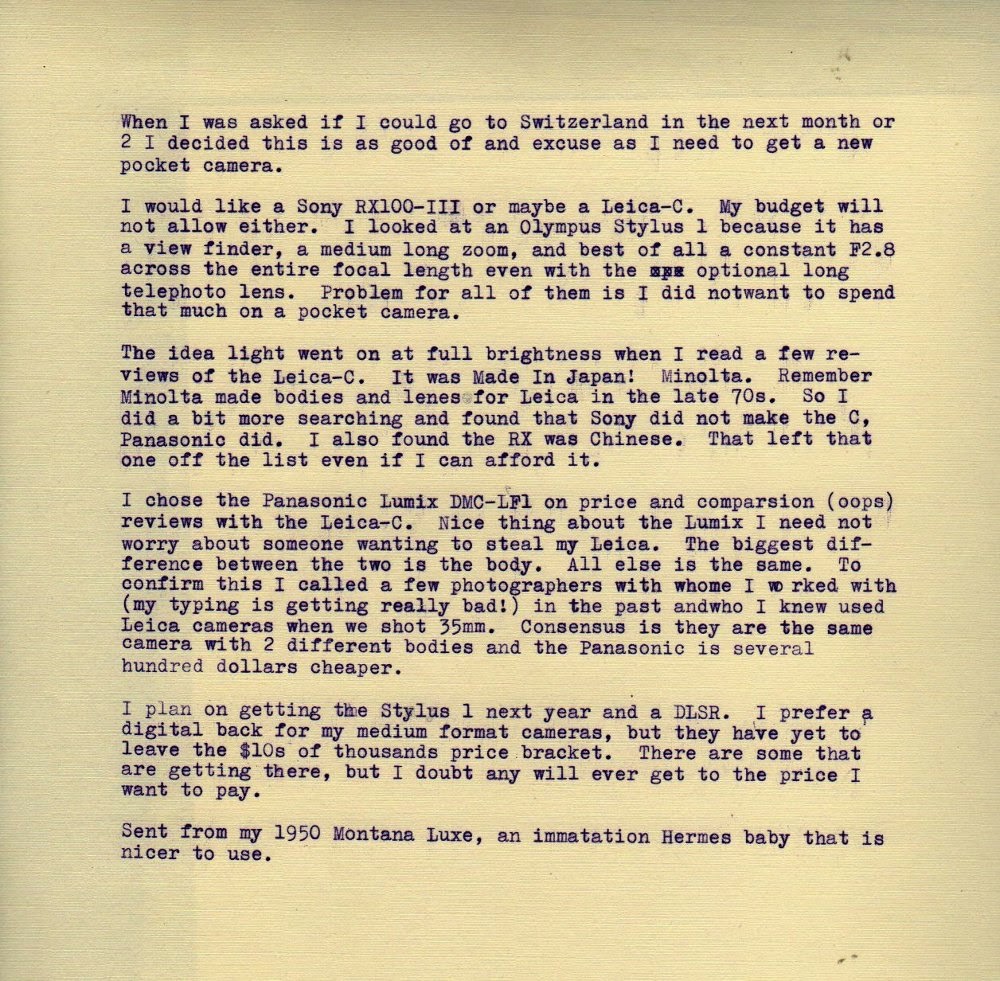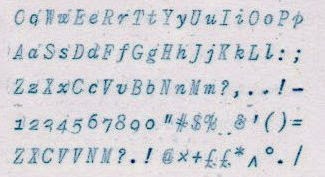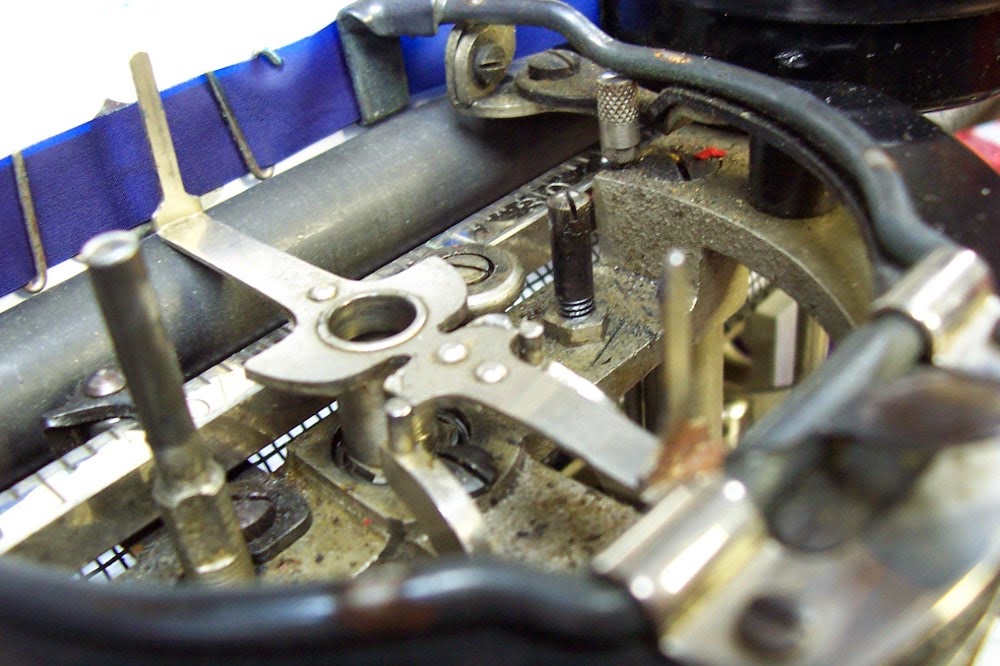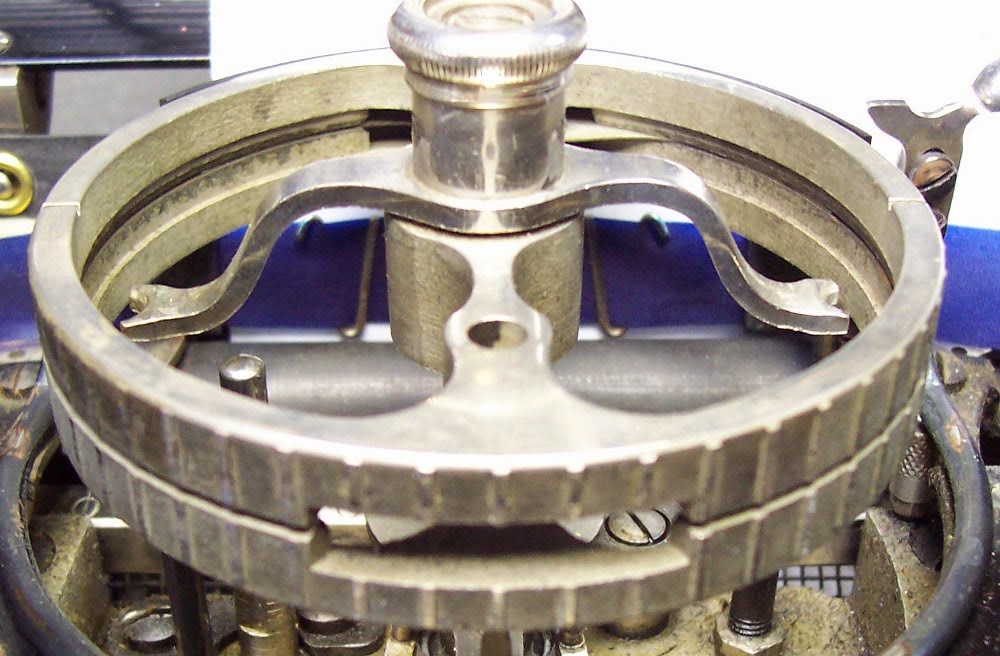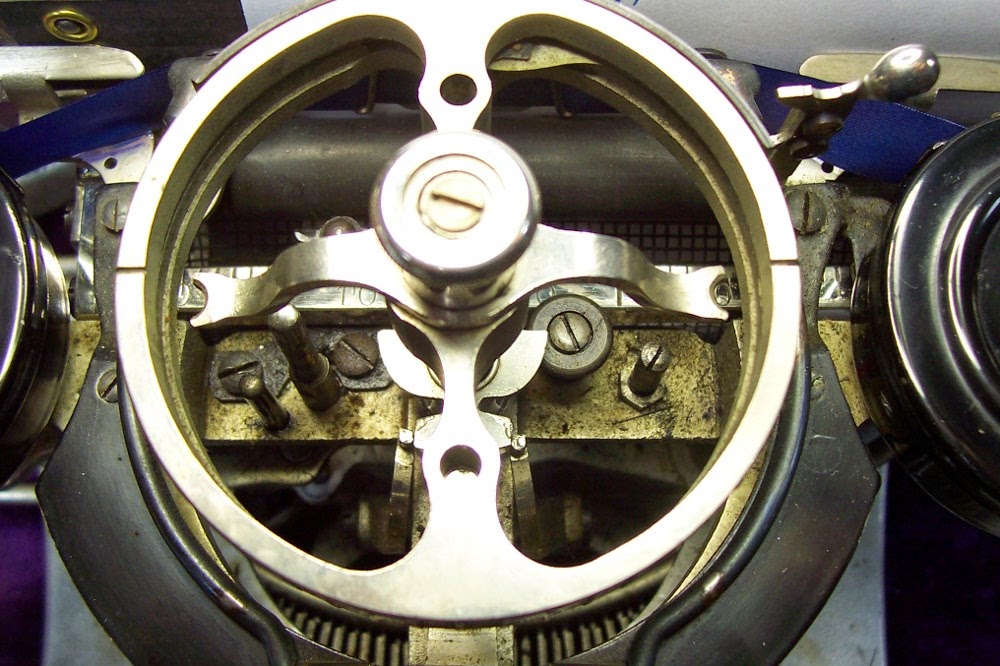 |
| One item that helped me choose, Leica lens. |
 |
| My 3.2Mp camera is jsut not as sharp as the LF1 |
 |
| Advantage is the eye level view finder. I will forego a better camera when it does not have a view finder. Why manufactures are too cheap to put a view finder on all their cameras, especially the higer priced ones is asinine. Disadvantage is the dumb lay-put of the power switch and shutter release switch. Same on the Leica-C. The back is not scratched; it is reflecting the muslin under the camera. |
 |
| The control ring is nice and I've found I can reassign it to what I like or use as a stepped zoom to fixed focal lengths. Some reviews state it cannot be reassigned. Maybe the reviewers did not give it a try. |
 |
| Unlike the Leica-C the LF1 has anchors for a neck strap on both sides. Even though this is a tiny camera I like using a neck strap. |
 |
| The camera is not much larger than the Jackalope sticker. |
 |
| Montana Luxe taken with the Lumix DMC-LF1 under the same lighting none of my other digital cameras seem to like. The LF1 auto white balance is quite good and fast. |
I've not shot more than a few dozen pictures with the camera yet. Mostly boring flower macros. Macro focus is 3cm to infinity with zoom on the control ring.
What I like about the camera is the 12.1 Mp 1/1.7 sensor, processor, the control ring, view finder, fast response, 2 strap anchors, Leica lens, many of the functions, Nice lens range, ISO range, and small size. I wanted a pocket camera for my trip, but the camera had to be a functional as near to pro camera as I could afford. The most impressive thing about this camera is it is available for about $250.00 from several reputable suppliers in NYC. I got mine with a spare battery, charger, and Class 10 64MB Sandisk SD card for just over $250 which was about what I expected budget-wise.
What I do not like is the power switch and shutter release switch locations, no grip, no hot shoe.
A tilting LCD screen like Sony uses would be nice, but I do not miss my old Sony much. The lack of a grip will be corrected as soon as my Fipbak G4 arrives.
How does this compare to an Olympus Stylus 1? The Stylus has a nicer traditional design, hot shoe, centered view finder, selectable video speed modes, constant F:2.8 for all focal lengths, and similar 12.1Mp sensor. A much nicer compact camera for Mrs. M and her bird watching.
Note on the Montana being nicer to use than my Baby. I used the Hermes Baby quite often and even on a few trips due to its weight (less than a Skyriter). It is not all that great of a typer though. First off every sheet catches the ribbon covers as it is started, touch is mediocre at best. It has a more solid sound than the Montana, but still a cheap sound.
The Montana feeds paper smoother, has a better touch and sounds about the same as the Baby. I had not been using it since it needed a ribbon. Now with a new ribbon it even has a nicer typeface than the Baby.
Both typewriters need their platen recovered and the Montana has some minor flat spots on the paper feed pressure rollers. I did not weigh them, but they seem to feel about the same weight; both lighter and a bit smaller than a Skyriter. Neither type as good as a Smith-Corona Skyriter.




